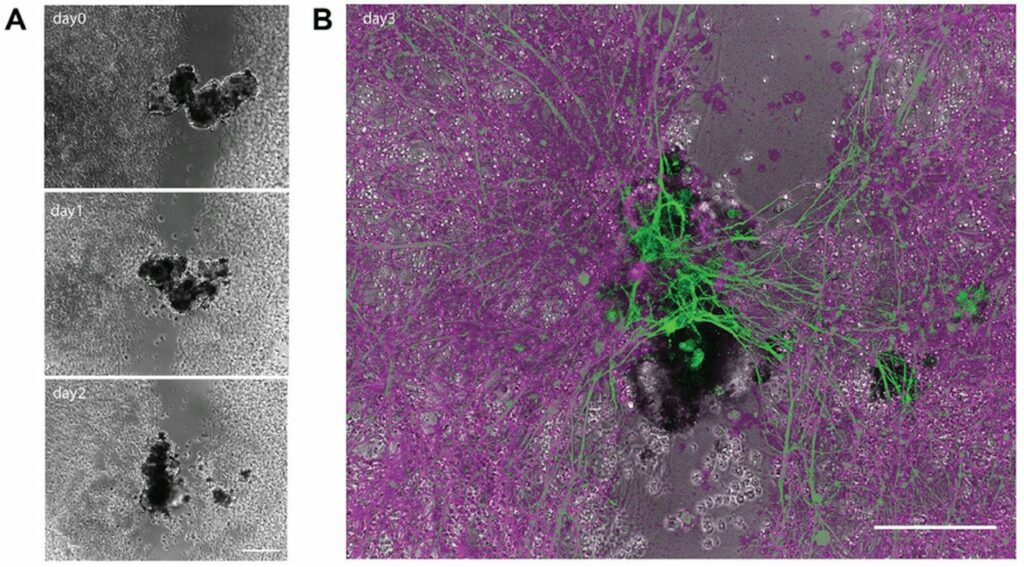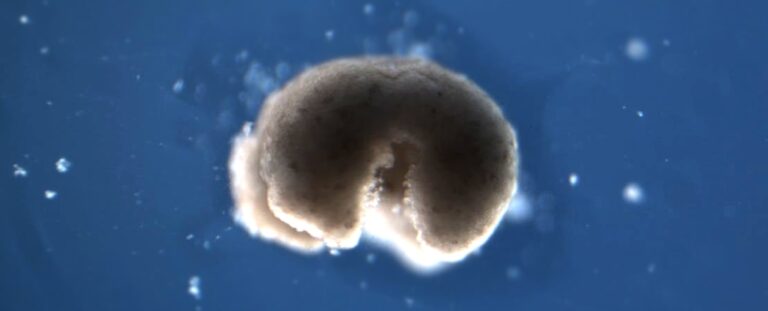Scientists Claim These Creatures Exist in a ‘Third State’ Between Life and Death
Dying and living are two contrasting states but with the recent disapproval of new bigger organisms from the cells of a dead organism, there appears to be more ‘ state’ than the two.
Originally, a cessation of all the functions in an organism is considered death according to the scientists. Nevertheless, autoschemes like organ donation prove that organs, tissues as well as cells can continue to perform even if the organism is no longer alive.
This raises a key question: It is pertinent to know what makes some cells continue to function even after the death of the whole organism?
Being the researchers who investigated postmortem processes, we have recently reviewed the material which concerned the question of how some cells can transform to the new multiresistant structures with different functions provided they are supplied with nutrients, oxygen, bioelectric signals, or biochemical stimulation when the organism is already dead.
Life, death and emergence of something new
The ideas of; third state raises controversy on the standard idea of the cell behavior. There is nothing more equal to gowing and growing but there are few examples where an organism undergoes abrupt changes that are not programmed.
Precancerous tumors, HPN, and cancer cell types that are capable of continued division in a Petri dish, for instance HeLa cells, do not classify as being a component of this third state because they do not gain new functions.
But, the investigators have found that the skin cells harvested from dead frog embryos are capable of differently adapting to the petri dish environment. These cells began recreating themselves into higher forms of structures in the form of xenobots.
Such xenobots demonstrate manoeuvres so far removed from their basic biological functions. Normally in living frog embryos, cilia – small, hair like structure – are used in moving mucus. In xenobots, usual functions of cilia are switched around where the species uses them to move around its surrounding.
Xenobots possess another kind of autonomy in that they are capable of kinematic self-replication, in other words, are physical organisms that can replicate themselves in real time without necessarily growing or increasing in size. This is different from other replication processes which are normally inside or on the surface of the organisms body.
Also, recent studies revealed that single human lung cells can organize themselves into tiny structures that are independent of the organism and can even move – anthrobots. These anthrobots develop new actions and forms; not only can they move and find their way around, they can also heal themselves as well as the injured neuron cells within their vicinity.
These findings evidence the remarkable plasticity of cellular and signaling networks and could subvert cell and organism design and development paradigms. The third state has it that the actual process of dying might be an essential element in life’s dynamics throughout an individual’s existence.

Postmortem conditions
Several factors determine which cells and the tissues of an organism can or cannot survive and work after the death of an organism. These include the environmental conditions, the metabolic activity of microorganisms and the preservation techniques are used.
Cells possess differing survival intervals; cells are of diverse types. In humans WHITE BLOOD CELLS die within 60 to 86 hours after death. Muscle cells of mice were observed to divide even if the mice have been dead for 14 days ; fibroblast cells in sheep and goats have been grown in culture media for as long as one month.
Cell metabolism is important because survival of the cell depends with its metabolic activity. It is also important to note that cells with elevated requirements for energy are less easy to support as compared to cells with low energy requirements. There are preservation methods including cryopreservation which would allow for the tissues to work in a similar capacity to tissues harvested from living donors.
Cells themselves also have inherent defenses against such dangers Cells which also contain inherent survival strategies. For example, stress and immune system –associated genes have been reported to be more active after death because the process disrupts homeostasis. The reasons include trauma, infections, and the amount of time passed since the death of the patient affected the cell and tissues viability.
Age, health, and sex among others, species also affect the kind of cell structure found in the postmortem. This is seen in the challenges of successfully culturing insulin producing metabolically active islet cells from the human donor; failure which attributed to autoimmune destruction, high energy utilization and breakdown of the protective barriers.
The precise mechanisms how some cells can continue to operate during state of death are still not well defined. The first theory proposes that although channels and pumps embed within cell walls appear as wiring, these cells use electrical circuits to produce signals for cell; communication, growth and development of the organism. Furthermore, such developmental genes as stress response, immunoreactivity, and epigenetic regulation have been discovered to be upregulated after the post-mortem period in mice, zebrafish, and humans, making them capable of immense transformation in most recruitable cell types.
Implications for biology and medicine
The concept of the third state not only deepens our understanding of cellular adaptability but also opens the door to potential new treatments.
For instance, anthrobots could be created from a person’s own living tissue to deliver medications without causing an immune reaction. Engineered anthrobots could be injected into the body to dissolve arterial plaque in atherosclerosis patients or remove excess mucus in those with cystic fibrosis.
Crucially, these multicellular organisms have a limited lifespan, naturally degrading after four to six weeks, serving as a built-in “kill switch” to prevent the growth of invasive cells.
Gaining more insight into how certain cells continue to function and transform into multicellular organisms after death could lead to advances in personalized and preventive medicine.
This article is republished from The Conversation under a Creative Commons license. Read the original article.
Do not forget to share your opinion with us to provide you with the best posts !




0 Comments